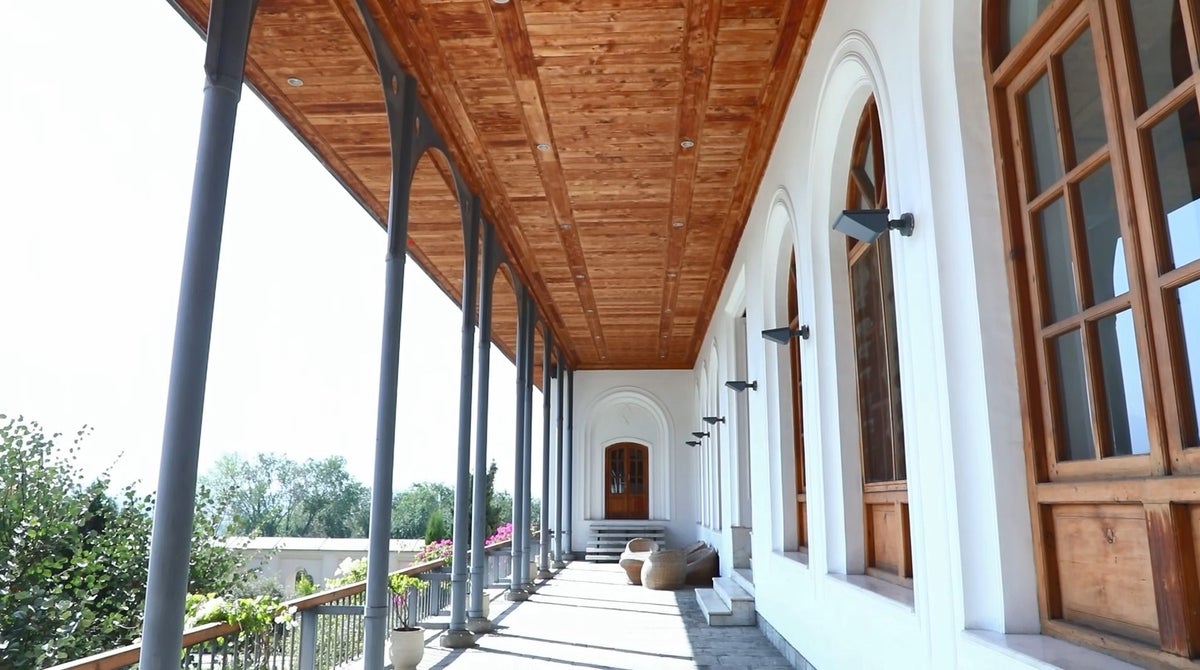
This article first appeared in our partner site, Independent Urdu
Shirin Aqa Azmi has been working here for almost twenty years. He looks after a garden that spans over a thousand square metres, and that remains an iconic landmark in Kabul.
Babur, the founder of the Mughal Empire, developed this garden at the centre of a bustling metropolis, five centuries ago on the occasion of his conquest of Kabul.
The gardens welcome hundreds of visitors each day with numbers reaching the thousands on Fridays, Eid and Nowruz as Azmi highlights to Independent Urdu.
There are many historical landmarks in the gardens. The caravanserai in the western part of the garden once housed accommodation for weary travellers and stables for their horses. Today, there are shops and offices in this corner of the Gardens of Babur.
In the upper part of the gardens, one comes across the unassuming mausoleum of Zahiruddin Muhammad Babur, with no domed, opulent structure to tell of the erstwhile grandeur of its inhabitant. Instead, his tomb lies in the open air according to his own instruction.
Historical sources suggest that Babur took a particular liking to the climate of Kabul, so he decreed that he should be buried there. However, he died in the Indian city of Agra and was buried there for a little over 10 years. His son and successor Humayun transferred his remains to Kabul.
Political and military campaigns brought many Mughal emperors from Babur’s line to Kabul. They would also come to visit the grave of their forefather and develop the gardens where he lay rest.
Beside Babur’s tomb is the burial place of his son, Hindal, who died in battle against his brother Humayun. Hindal, meaning ‘Taker of India’, was so named because he was born at the start of Babur’s conquests in India.
Mirza Hakim, grandson of Babur and son of Humayun, who succeeded his father in ruling Kabul for many years and rebelled against his famous brother Jalaluddin Muhammad Akbar is also buried there.
With the fall of the Mughal Empire, the Gardens of Babur began to wither. At the end of the 18th century, Gauhar-un-Nissa Begum, the Mughal wife of Timur Shah was buried within the premises of Babur’s tomb. Timur ruled over the Durrani Empire, an Afghan empire that spanned Central, Western and South Asia.
Abdul Rahman Khan, Emir of Afghanistan in the late 19th century, greatly developed the Gardens of Babur and built the queen’s palace or Haram Sarai in front of Babur’s tomb and the Bagh-e-Babur hotel near the Shah Jahan Mosque.
In the 20th century, the garden was opened to the public. From 2005 to 2009, the Aga Khan Foundation rehabilitated the garden in the old style. The work has restored the garden’s lushness and status as a place of leisure in Kabul.
Translated by Tooba Ali, reviewed by Celine Assaf







